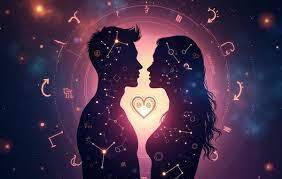Vedic astrology, also known as Jyotish Shastra, is not just an art of predicting events. It is a deep spiritual science that has evolved over thousands of years. Rooted in the sacred Vedas, the origin and development of Vedic astrology reflect the timeless quest of humankind to understand its place in the universe.
This ancient system has transitioned from being a spiritual guide for sages to becoming a trusted life compass for millions around the world. In this article, we’ll journey through its remarkable history and see how Vedic astrology has adapted to modern needs without losing its sacred essence.
The Vedic Roots of Astrology
The seeds of Vedic astrology were sown over 5,000 years ago in India, during the Vedic period. The term “Vedic” comes from the Vedas—sacred texts considered the oldest scriptures of Hinduism. These texts include the Rigveda, Samaveda, Yajurveda, and Atharvaveda, which contain hymns, chants, and spiritual philosophies.
Within these spiritual writings lies the Vedanga Jyotisha, one of the six auxiliary disciplines of the Vedas. This ancient text is considered the earliest formalization of Vedic astrology. It provided guidelines on timing rituals, predicting natural phenomena, and understanding cosmic cycles.
The Role of Sages and Rishis
The real development of Vedic astrology was shaped by enlightened sages like Parashara, Bhrigu, and Jaimini. These Rishis not only observed the skies but also received divine insights through meditation. Their teachings laid the foundation for major astrological texts, such as:
-
Brihat Parashara Hora Shastra by Sage Parashara
-
Bhrigu Samhita by Sage Bhrigu
-
Jaimini Sutras by Sage Jaimini
These texts presented rules for interpreting planetary movements, birth charts, and cosmic energies that influence human destiny. Their principles remain at the heart of Vedic astrology even today.
From Astronomy to Astrology
Initially, Jyotish was closely tied to astronomy. Ancient Indian scholars were brilliant mathematicians and astronomers. They could calculate planetary positions with incredible precision, often more accurately than their Western counterparts of the time.
Over time, this astronomical science evolved into astrology—the interpretation of planetary positions and their impact on life. Thus, the line between Ganita Jyotisha (astronomical calculations) and Phala Jyotisha (astrological predictions) was drawn.
Influence of Regional and Cultural Changes
As centuries passed, Vedic astrology spread across India and absorbed various cultural influences. Different regions developed their own methods and interpretations. For example:
-
South Indian astrology uses the Rasi chart, known as the South Indian chart style.
-
North Indian astrology follows a diamond-shaped chart layout.
-
The Eastern states developed KP astrology, a system focusing on stellar constellations and sub-lords.
Despite these differences, the core principles remained the same—highlighting how adaptable and rich the tradition truly is.
Astrology in Ancient Royal Courts
During ancient and medieval times, kings and rulers would rely heavily on astrologers for planning battles, marriages, coronations, and construction of temples. Birth charts were drawn for newborn princes, and eclipses were studied as divine omens.
Astrologers held prominent positions in royal courts. Their predictions could influence national decisions and spiritual guidance alike.
The Colonial Period and Western Critique
During British colonial rule, traditional Indian sciences, including astrology, were dismissed as superstition by Western scholars. However, the deeper value of Vedic astrology never fully disappeared. Even when Western education became dominant, Vedic astrology continued to thrive in Indian households and spiritual circles.
In fact, some European scholars became fascinated with Indian astrology, translating ancient texts and integrating them with Western astrological models.
The Modern Revival and Digital Evolution
In the 20th and 21st centuries, Vedic astrology has undergone a digital renaissance. With the advent of computers, mobile apps, and online astrology platforms, the complex calculations that once took hours can now be done in seconds.
Today, seekers from all over the globe consult Vedic astrologers online for insights into relationships, careers, health, and spiritual growth.
The vedic astrology history is no longer confined to palm-leaf manuscripts or Sanskrit scrolls—it is accessible on smartphones and websites, bringing ancient wisdom to the fingertips of the modern world.
Why Vedic Astrology Still Matters
You might wonder, with all the advancements in science and technology, why does astrology still hold relevance?
Because astrology doesn’t offer rigid predictions—it offers perspective. Vedic astrology acts like a spiritual GPS, helping individuals align with their soul’s journey, understand karmic patterns, and make more conscious decisions.
It’s not about changing destiny, but understanding it better.
Conclusion: A Timeless Science for Changing Times
The origin and development of Vedic astrology is a fascinating tale of spiritual wisdom, scientific brilliance, and cultural resilience. From sacred Vedic chants to global digital platforms, this system has traveled through ages and adapted without losing its soul.
Whether you’re a curious learner or a devout believer, Vedic astrology invites you to explore the dance between cosmos and consciousness.
The stars may not dictate your future, but they sure have a story to tell—one that’s been told for thousands of years and continues to guide millions today.









